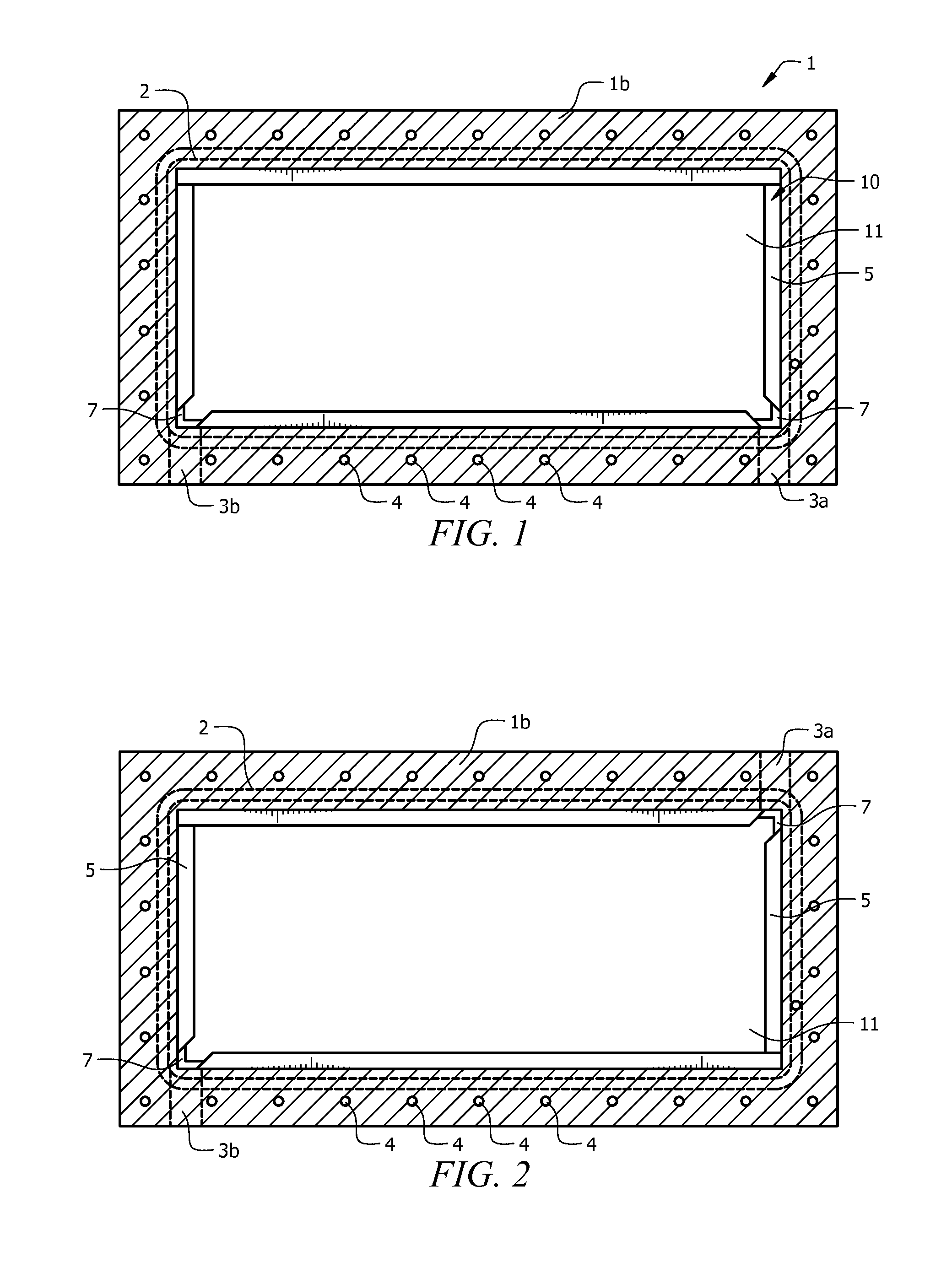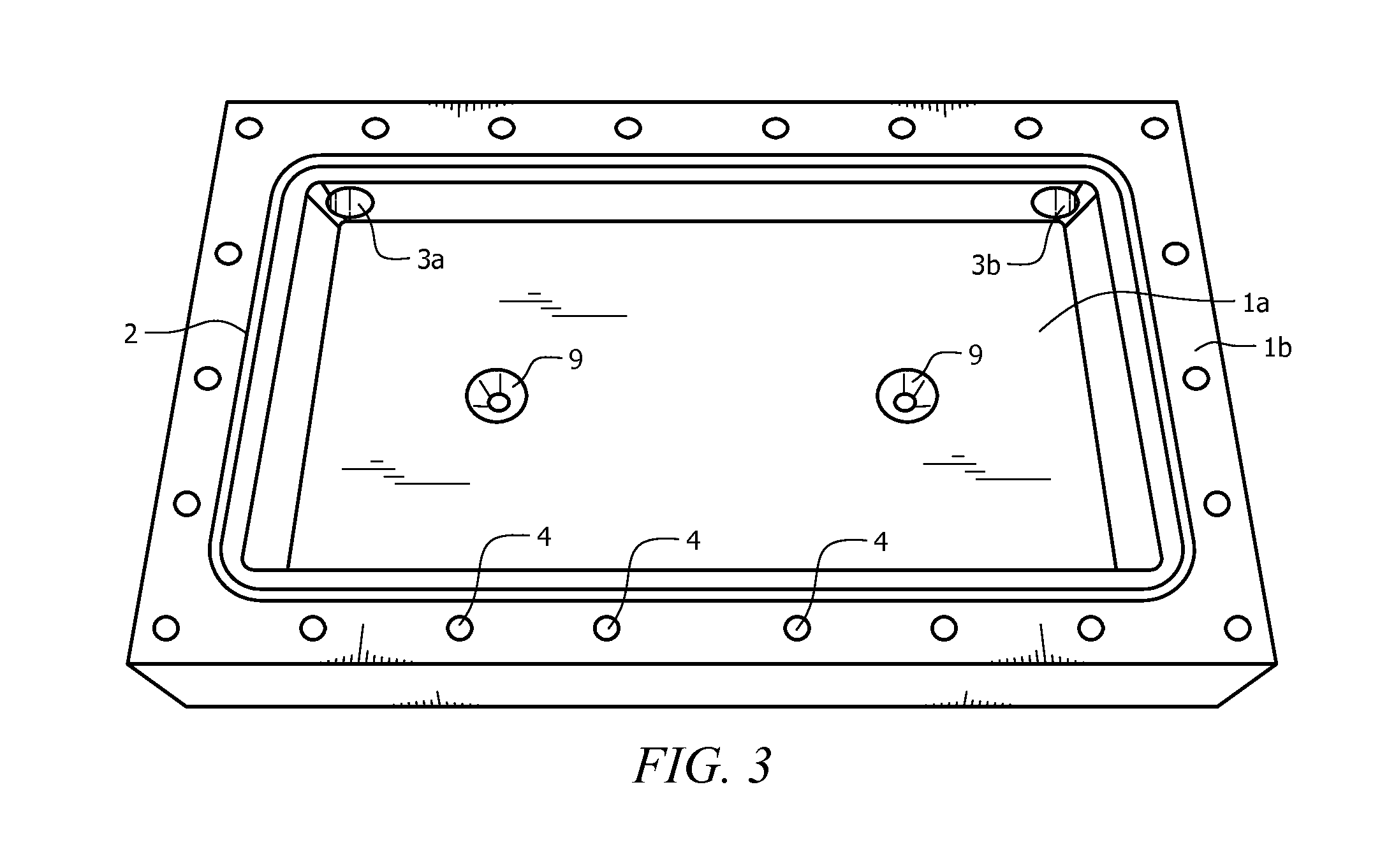Electrolyzing cell for generating hydrogen and oxygen and method of use
a hydrogen and oxygen and electrolysis cell technology, applied in the field of electrolysis cells, can solve the problems of generating voltage loss, cell thermal runaway, and need for costly electronics to monitor, and achieve the effects of enhancing output, reducing voltage loss, and reducing voltage loss
- Summary
- Abstract
- Description
- Claims
- Application Information
AI Technical Summary
Benefits of technology
Problems solved by technology
Method used
Image
Examples
example
[0043
[0044]The electrolyzer cell comprises cassette 10 and positive plate 30 enclosed in housing 1, as seen in FIG. 1. Housing 1 is made from known non-conductive materials, such as acrylic, acetal, delrin, or plastic, and provides for pressure retention and rigidity to positive plate, thereby maintaining tolerances. Housing 1 includes an interstitial space adapted to accept cassette 10. Preferably, cassette 10 fits tightly into the interstitial space. The closed base of housing 1 forms positive electrode base 1a, with at least one opening provided in positive electrode base 1a, as seen in FIG. 3. The open, upper face of housing 1 forms negative electrode face 1b. A groove runs outside the interstitial space on negative electrode face 1b, forming case o-ring channel 2, which fits case o-ring 50, seen in FIG. 4. A plurality of electrolyte flow apertures 3a and 3b are providing running from the outside edge of housing 1 to the interstitial space, seen in FIG. 1. Electrolyte flow fitti...
PUM
| Property | Measurement | Unit |
|---|---|---|
| voltage | aaaaa | aaaaa |
| temperature | aaaaa | aaaaa |
| electroconductive | aaaaa | aaaaa |
Abstract
Description
Claims
Application Information
 Login to View More
Login to View More - R&D
- Intellectual Property
- Life Sciences
- Materials
- Tech Scout
- Unparalleled Data Quality
- Higher Quality Content
- 60% Fewer Hallucinations
Browse by: Latest US Patents, China's latest patents, Technical Efficacy Thesaurus, Application Domain, Technology Topic, Popular Technical Reports.
© 2025 PatSnap. All rights reserved.Legal|Privacy policy|Modern Slavery Act Transparency Statement|Sitemap|About US| Contact US: help@patsnap.com



